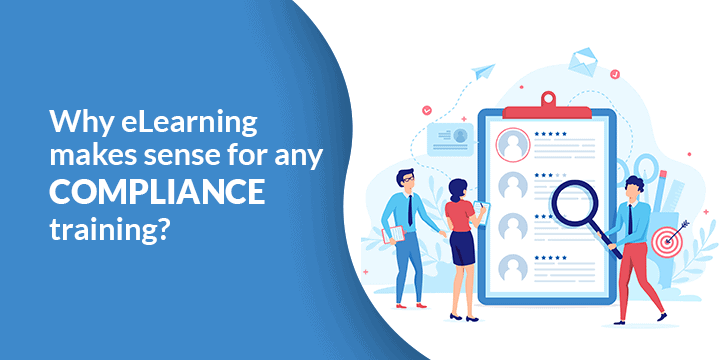It’s the year 2019 and digitalization is at its peak. Companies are openly accepting the trend of digital transformation and redefining businesses. Bill Schmarzo, CTO of IoT and analytics, Hitachi Vantara, said that “As traditional organizations of all forms look to take on their digital-friendly counterparts, spending on digital transformation initiatives will surely be on the rise. The move from monolithic, legacy systems to nimbler cloud-based, microservices approaches will continue to sweep through businesses looking to gain competitive advantages by making better use of development resources, tapping into new sources of data, and offering more compelling user experience to their customers.”
And when businesses transform, the employees must change too. Change at an organizational level is often associated with internal training, motivation, etc., and with everything else digitalized it is just the right choice to switch to eLearning. And now more than ever when it comes to compliance training. Here’s why switching to compliance training makes sense.
Content Relevance
The most important aspect of any Compliance training is its relevance with every industry's current guidelines and regulations. Compliance training should be up-to-date and what better way to do it than combine it with the speed of technology. If compliance training is outdated, violations may occur which may lead to severe consequences. eLearning, Mobile Learning, and Microlearning all included making learning delivery fast and contextual.
Engagement and Globalization
An odd pair right? But that’s what eLearning offers. Intuitive designs that can engage learners. After all compliance training has always been labeled as boring and it definitely needs a digital twist. In addition, eLearning can be used to train learners sitting at different parts of the globe simultaneously, and that also considering the regulatory landscapes and compliance requirements of the specific region.
Stored Content
Documentation may not seem that important, but is it something that can be ignored in case of compliance training. While organizations require proof that their employees have undergone, certain industries also require procedures to be written down. eLearning makes both possible to record attendance, level of completion, and storing all the necessary procedural documents all in one place.
Updated Content
As discussed earlier staying updated is of crucial importance in compliance training and continuously updating the learning modules may be required in some cases, where compliance requirements keep changing. eLearning makes this possible and can allow businesses to focus on core activities.
Customizability
In addition to its flexibility in delivery, eLearning also offers customizability. From the content presentation to its order, courses can be built to meet the
exact governance, risk, and compliance specifications, branding, and design specifications included.
Evaluation
Any training requires a means to measure its effectiveness. With eLearning, the assessments become easier and interesting too to a certain extent. Metrics used to monitor compliance issues can be linked with training to determine the improvements in post-training. Evaluations also help in identifying the learning gaps, and in making improvements to the training model.
With everything else fast-paced and cutting edge, it only makes sense to train in that direction. And with everything else prepping towards a newer turn in the coming decade, it is high time that training becomes flexible and easily accessible too, all that comes as a package with eLearning.
So, rethink your organization’s learning strategy now if you haven’t yet. And if you need us we are just a click away.



